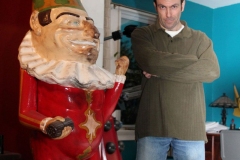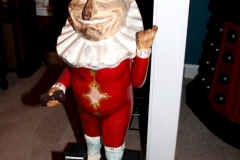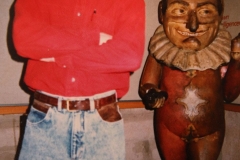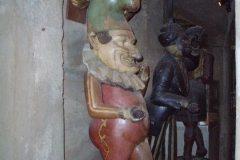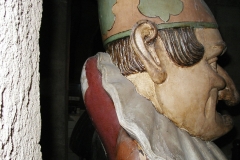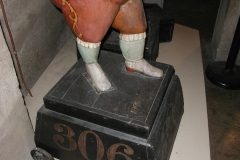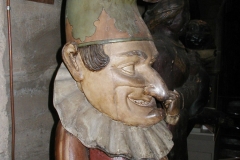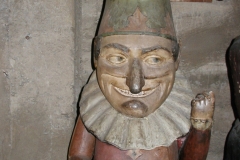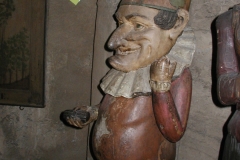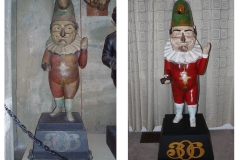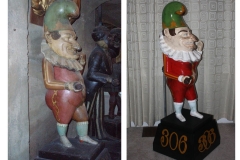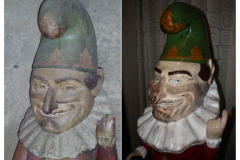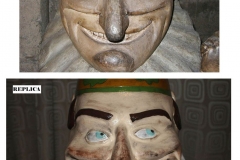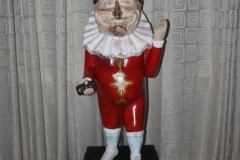The Cigar Store Punch is another story that starts very early for me. My Mom stayed at home when we were kids, and she would take us to many libraries and museums. The Mercer Museum was just a hop, skip and jump away in beautiful Doylestown and was so voluminous that it was a perfect place to spend hours just wandering. It’s an awesome place full of examples of early American ingenuity…a quality that I appreciate wholeheartedly. One item that always stood out to me was the Cigar Store Punch. I had seen a few cigar store Indians but never before a punch and there he was just standing there smirking…as if he was mocking me. I decided that I had to have one somehow. In 1989 I took some pics and took some measurements intending to carve one out of a solid log of wood; that idea turned out to be impractical. But I would not be denied! It was not until 2009 that the project became feasible. I went to the Mercer Museum and took loads of pictures at all angles and took a lot of measurements without actually touching the piece, of course. From there I set about the basic frame/core by gluing together many layers of insulation foam. From there I carved the figure out of the foam. The head and arms were sculpted separately. I then covered the foam figure with Modge Podge as a basecoat and then I started applying and sanding off many layers of Bondo until I got the figure that I was happy with. The wooden base was simple enough but it’s interesting to note the figure could not be complete without it.
This was my first serious attempt at carving an actual figure in the foam/Bondo format. In retrospect there are things I would do differently but I’m not planning on a re-do just at the moment. I am quite happy with how it turned out; it is absolutely a conversation starter when people first see it. And I get to relive or re-spark a small part of my childhood when I look at it and am reminded of having looked at it all these years and now it’s a relic in my house.
It took about 4 months to make it. I made a number of discoveries during this build, and that is always part of the creative process: discovering 100 ways NOT to make a light bulb before discovering the one correct way. Each new discovery and final success makes the next more challenging one possible.

